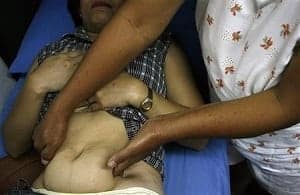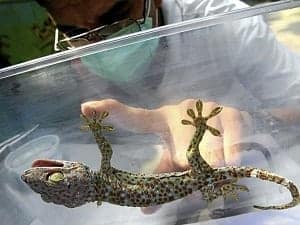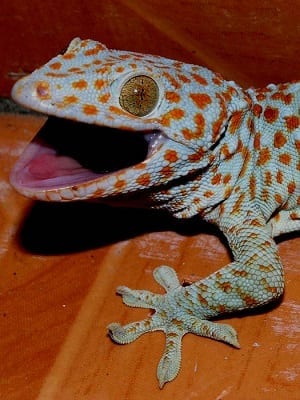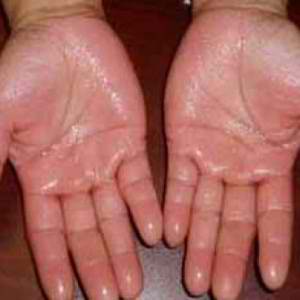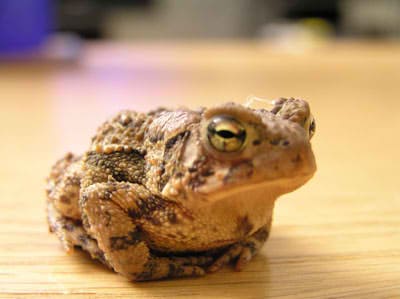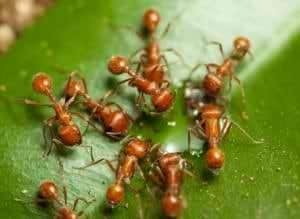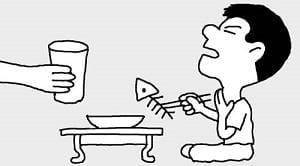Top 10 Pinoy Health Myths You Thought Were True

Growing up, we were taught to believe that whatever nanay and lola told us, is truth in its most absolute. We never dared question. These ladies, after all, were strangely clairvoyant – when we refused to listen to their admonitions, something bad does happen.
So when nanay said you shouldn’t sleep with wet hair or else you’ll go blind – we obey. After all, we wouldn’t want to find out about that the hard way.
Of course, you know by now that it’s a myth to rival those classic urban legends like the one that involved a popular mall, a beautiful actress and a snake twin for a brother. Ridiculous, really but one that we actually believed to be true at some point in our lives. With all the myths surrounding our rich culture, we deserve a local version of Mythbusters.
How many of these myths did you actually believe in? Let’s take a trip down gullible memory lane and bust some of the most popular, the least heard of and the funniest health myths we grew up with as Pinoys.
1. Sleeping with Wet Hair Causes Blindness
Do our hairs give off toxic fumes when we sleep to cause us to go blind? At least that’s how I used to picture it as a kid.
Of course, from the medical viewpoint, there is absolutely no plausible reason for you to go blind if you sleep with wet hair, as an American Ophthalmologist will tell you. The only bad thing probably about sleeping with wet hair is how stringy your hair is going to be in the morning. [Image source: www.glbrain.com]
2. Paglilihi
Could paglilihi be a ploy to get husbands to be more submissive to their wives? Maybe. But there is still no evidence to support the claim that a mother’s fascination with eating crabs during pregnancy will give the fetus a deformity akin to that of the crustacean. Or that eating a twin banana during pregnancy will cause you to have twins.
Although still widely believed today, paglilihi is still just a myth with no verifiable medical evidence. [Image source: www.anmum.com.ph]
3. Hilot to Get Pregnant
For Filipino women having trouble conceiving, getting a hilot or an abdominal massage to “position” the “lowered” uterus by “raising” it to prime it for conception is encouraged, if not urged.
While some attribute their pregnancy success to the old woman with the expert hands, some are still unable to get pregnant. There’s just no scientific evidence to support the claim that abdominal massages can increase chances of getting pregnant. [Image source: www.reuters.com]
4. Eating Geckos (“Tuko”) to Cure Asthma
First off, asthma is a long-term disease and has no known cure. So that alone should bust this myth.
Lizards or geckos are often dried, grilled, or fried and then consumed by the sufferer, supposedly to cure asthma and other diseases. To debunk this myth, our government even felt the need to issue a warning against using these poor creatures as a cure. [Image source: lifestyle.inquirer.net]
5. Geckos (“Tuko”) Sticking to Human Skin
While geckos do have the superhero-like quality of adhesion to almost any surface, getting stuck permanently to human skin is something we have yet to see. In fact, there’s no mention anywhere of geckos sticking to any surface without the possibility of removal.
As children growing up in Western Visayas though, we were told to stay away from geckos lest they get stuck to your skin. And the only remedy, we were told, was to have an Aeta bend over in front of you, and only then will the gecko let go.
6. Pasma
We’ve heard it once too often. After a long hard day of labor or a few hours of ironing clothes, you shouldn’t touch cold water lest you get pasma. But the problem is, pasma does not exist – Medically that is.
Brushed off as folk illness by medical anthropologists, a lot of Pinoys still believe in its occurrence despite of its non-existence.
7. Getting Warts from Frog Urine
This notion must have stemmed from frogs being warty and all – but there’s no scientific evidence linking frog urine to the growth of warts. Warts grow when the HPV (Human Papillomavirus) invades the skin through a tiny scratch usually, and not from frog pee. I’m sure frogs will agree.
8. Eating Ants for a Great Singing Voice
We Pinoys love to sing, and probably out of that love, came all sorts of myths about achieving that Regine Velasquez voice we’re hoping for. But the thing is, ants can’t help you sing better.
Although ants produce formic acid which kills off bacteria and could help clear up throat infections, it is highly doubtful that you’re going to acquire Regine’s range and pitch even if you gobble up the whole anthill.
9. Suhi and Fish Bones Stuck in Throat
Fishbone stuck down your throat? No problem. If you have a family member that was breech born (suhi), have him/her massage your throat for a bit and the fishbone will dislodge itself. Works like magic, right? But apparently, this defies logical and scientific reasoning. It’s a very popular folk belief though, and my lola still insists it works. [Image source: english.chosun.com]
10. Usog
Usog is when you unknowingly hex a child by greeting (binati) or just by being new to that place. The child may suffer from gas pain, fever, convulsions, and headache. Apparently, the only cure is by wetting your fingertips with your saliva and rubbing this on the child’s forehead, tummy or feet while repeating the words “pwera usog”.
While there’s no scientific basis for usog, there’s a more logical theory about child distress in meeting strangers. [Image source: stuffpoint.com]
Also Read: Another 10 Pinoy Health Myths You Thought Were True
FilipiKnow
FilipiKnow strives to ensure each article published on this website is as accurate and reliable as possible. We invite you, our reader, to take part in our mission to provide free, high-quality information for every Juan. If you think this article needs improvement, or if you have suggestions on how we can better achieve our goals, let us know by sending a message to admin at filipiknow dot net
Copyright Notice
All materials contained on this site are protected by the Republic of the Philippines copyright law and may not be reproduced, distributed, transmitted, displayed, published, or broadcast without the prior written permission of filipiknow.net or in the case of third party materials, the owner of that content. You may not alter or remove any trademark, copyright, or other notice from copies of the content. Be warned that we have already reported and helped terminate several websites and YouTube channels for blatantly stealing our content. If you wish to use filipiknow.net content for commercial purposes, such as for content syndication, etc., please contact us at legal(at)filipiknow(dot)net


